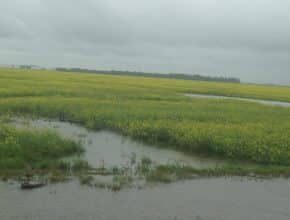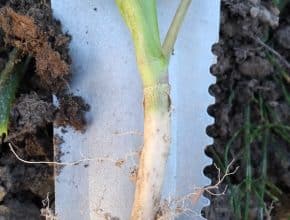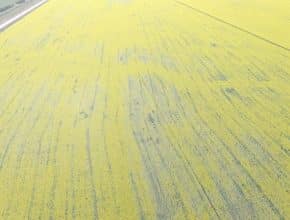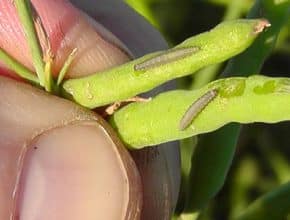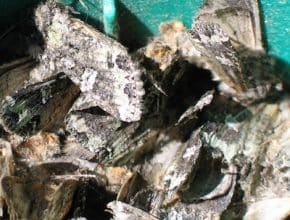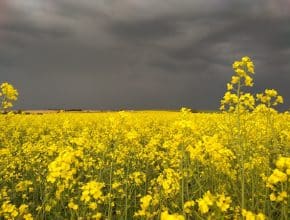Home / Canola Watch / July 13, 2016 - Issue 17
-
How well do you know your canola leaf lesions? Take the quiz to find out! (Photo credit: Angel Hewson)…
-
Heavy rains in some areas have canola fields looking like the one in this photo from Brent Wiebe. So what happens to canola plants that are underwater for a few days?…
-
While scouting canola fields at flowering and podding stages, dig up a few plants in each field and look at the crown and primary root. If the crop has disease symptoms, compare healthy and unhealthy plants. Even if the crop has no outward symptoms, dig up a few plants anyway. Early infection may be present even if the plant shows…
-
Canola Watch had a question this week about light-coloured petals and what can cause them. The field in question had large unruly patches of light-coloured flowers, indicating it was likely related to soil. Sulphur deficiency seems the most obvious but other causes must be ruled out first…
-
Thresholds for diamondback moth larvae are 100-150 larvae per square metre in immature to flowering plants and 200-300 larvae per square metre (20-30 per square foot) in plants with flowers and pods…
-
Berth armyworm moth counts are generally low (fewer than 300 per trap) across the Prairies, which means a reduced risk for worm damage over the coming weeks…
-
Heavy rains can increase the sclerotinia stem rot risk but they also make fields too wet for ground sprayers. This can delay timely applications, especially because demand for aerial applicators can make for long wait times. Here are scenarios that may help you work through this situation…

